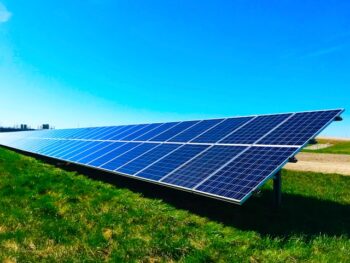Energy is fundamental to the advancement of human civilization. From the earliest discovery of fire to the contemporary marvels of nuclear power and renewable energy sources, energy has been the driving force behind human progress. This article will explore the different types of energy, their impact on human development, and the future of energy technologies. Additionally, we will present comprehensive lists to illustrate the crucial role of energy in our lives.
Types of Energy
Energy comes in various forms, each with unique characteristics and applications. The primary types of energy include:
Fossil Fuels
Fossil fuels have been the backbone of industrialization and modern development, but they also pose significant environmental challenges.
– Coal:
– Applications: Primarily used for electricity generation and industrial processes such as steel manufacturing.
– Advantages: Abundant and inexpensive to extract.
– Disadvantages: High carbon emissions, air pollution, and significant environmental degradation from mining activities.
– Oil:
– Applications:Crucial for transportation (fuel for cars, planes, ships), heating, and as a raw material in the petrochemical industry (plastics, chemicals).
– Advantages: High energy density and relatively easy to transport and store.
– Disadvantages: Greenhouse gas emissions, oil spills, and geopolitical tensions over oil reserves.
– Natural Gas:
– Applications: Used for heating, electricity generation, and as a chemical feedstock.
– Advantages: Cleaner burning than coal and oil, high efficiency.
– Disadvantages: Methane emissions (a potent greenhouse gas), environmental impact from fracking, and pipeline risks.
Renewable Energy
Renewable energy sources are essential for sustainable development and combating climate change. These sources are replenished naturally and have lower environmental impacts.
– Solar Power:
– Applications: Generates electricity using photovoltaic (PV) cells or solar thermal systems to heat water or air.
– Advantages: Abundant, renewable, and low operating costs once installed.
– Disadvantages: Intermittent (dependent on sunlight), requires significant space for solar farms, and initial installation costs can be high.
– Wind Power:
– Applications: Converts wind energy into electricity using turbines.
– Advantages: Renewable, no emissions during operation, and land underneath turbines can still be used for agriculture.
– Disadvantages: Intermittent (dependent on wind conditions), visual and noise impact, and potential harm to wildlife like birds and bats.
– Hydropower:
– Applications: Generates electricity from the flow of water in rivers or dams.
– Advantages: Reliable, renewable, and capable of generating large amounts of electricity.
– Disadvantages: Ecosystem disruption, displacement of communities, and high initial construction costs.
– Geothermal Energy:
– Applications: Utilizes heat from within the Earth for heating and electricity generation.
– Advantages: Reliable, low emissions, and small land footprint.
– Disadvantages: Location-specific (available only in geologically active regions), and high upfront costs for drilling and plant construction.
– Biomass:
– Applications: Converts organic materials like wood, agricultural residues, and animal waste into energy through combustion or biochemical processes.
– Advantages: Utilizes waste materials, renewable, and can reduce landfill waste.
– Disadvantages: Emissions (though generally lower than fossil fuels), land use for crop production, and competition with food production.
Nuclear Energy
Nuclear energy offers a powerful and low-carbon alternative to fossil fuels, but it comes with its own set of challenges and risks.
– Nuclear Fission:
– Applications: Splits atomic nuclei to release energy, used in nuclear power plants.
– Advantages: Low greenhouse gas emissions, high energy output, and reliable power generation.
– Disadvantages: Radioactive waste, high initial cost, safety concerns (risk of accidents), and public opposition.
– Nuclear Fusion:
– Applications: Merging atomic nuclei to release energy, a potential future energy source.
– Advantages: Potential for limitless energy, no long-lived radioactive waste, and minimal greenhouse gas emissions.
– Disadvantages: Currently not commercially viable, extremely high research and development costs, and technical challenges to sustain fusion reactions.
If you like to play in an online casino and are interested in using PayPal for secure and convenient transactions, make sure to visit our recommended site. There, you’ll find a list of top PayPal casinos that offer seamless payment options and enhanced security for your deposits and withdrawals. See details to learn more about these trusted casinos and enjoy a hassle-free gaming experience.
Other Forms
Emerging and less common energy sources also contribute to the diverse energy landscape.
– Tidal Energy:
– Applications:Generates power from tidal movements.
– Advantages:Predictable and reliable energy source, renewable.
– Disadvantages: High initial cost, environmental impact on marine ecosystems, and location-specific (only viable in coastal areas with significant tidal ranges).
– Wave Energy:
– Applications: Harnesses the energy from ocean waves to generate electricity.
– Advantages: Renewable and abundant in coastal regions.
– Disadvantages: High initial cost, environmental impact, and technological challenges in converting wave motion to electricity efficiently.
Impact of Energy on Human Development
Energy is indispensable for various aspects of human life and development. Below are some key areas where energy plays a pivotal role:
Economic Growth
– **Industrial Production:** Energy powers factories and manufacturing plants.
– **Job Creation:** The energy sector, both renewable and non-renewable, provides millions of jobs.
Technological Advancements
– Innovation: Energy is crucial for powering research and development in various fields.
– Infrastructure: Building and maintaining infrastructure requires substantial energy.
Quality of Life
– Healthcare: Energy is essential for running hospitals and medical equipment.
– Education: Access to electricity improves educational facilities and opportunities.
– Daily Living: Energy powers homes, appliances, and provides comfort.
Environmental Sustainability
– Renewable Energy: Reduces dependence on fossil fuels and lowers carbon emissions.
– Conservation: Promotes the sustainable use of natural resources.
The Future of Energy
The future of energy is focused on sustainability, efficiency, and innovation. Emerging trends and technologies are shaping a new energy landscape:
Renewable Energy Expansion
– Solar and Wind Growth: Increasing adoption and technological advancements make these sources more viable.
– Hydropower and Geothermal: Continued development of these reliable renewable sources.
Energy Storage Solutions
– Battery Technology: Advances in lithium-ion and other battery technologies for storing renewable energy.
– Grid-Scale Storage: Large-scale energy storage systems to balance supply and demand.
Smart Grids
– Digital Integration: Incorporating digital technologies for efficient energy distribution and management.
– Resilience: Improving the reliability and robustness of energy grids.
Decentralized Energy Systems
– Microgrids: Localized energy grids that can operate independently or in conjunction with the main grid.
– Community Energy Projects: Empowering communities to generate and manage their own energy.
Energy Efficiency
– Building Standards: Implementing energy-efficient building codes and retrofitting existing structures.
– Appliances and Equipment: Developing and using energy-efficient appliances and machinery.
Lists to Illustrate Key Points
List 1: Benefits of Renewable Energy
1. Environmental Impact: Lower greenhouse gas emissions and reduced air pollution.
2. Sustainability: Inexhaustible energy sources that do not deplete natural resources.
3. Economic Benefits: Job creation in renewable energy sectors and reduced dependence on imported fuels.
4. Energy Security: Diversification of energy sources reduces vulnerability to supply disruptions.
5. Health Benefits: Reduced air pollution leads to better public health outcomes.
List 2: Challenges in Energy Transition
1. Infrastructure Costs: High initial investment required for renewable energy infrastructure.
2. Intermittency: Solar and wind energy depend on weather conditions and time of day.
3. Energy Storage: Need for efficient and cost-effective storage solutions.
4. Policy and Regulation: Implementing supportive policies and overcoming regulatory hurdles.
5. Public Awareness: Educating the public about the benefits and importance of renewable energy.
Conclusion
Energy is the lifeblood of modern civilization, driving economic growth, technological progress, and improving the quality of life. As we look to the future, the transition to sustainable energy sources and the implementation of energy-efficient practices are paramount for ensuring a prosperous and environmentally friendly world. By embracing renewable energy, advancing storage technologies, and fostering innovation, we can create a resilient and sustainable energy system that benefits humanity and the planet.
The journey towards a sustainable energy future requires collective effort and commitment from individuals, communities, and governments. Through informed choices, supportive policies, and technological advancements, we can harness the full potential of energy to power a brighter and more sustainable future for all.


